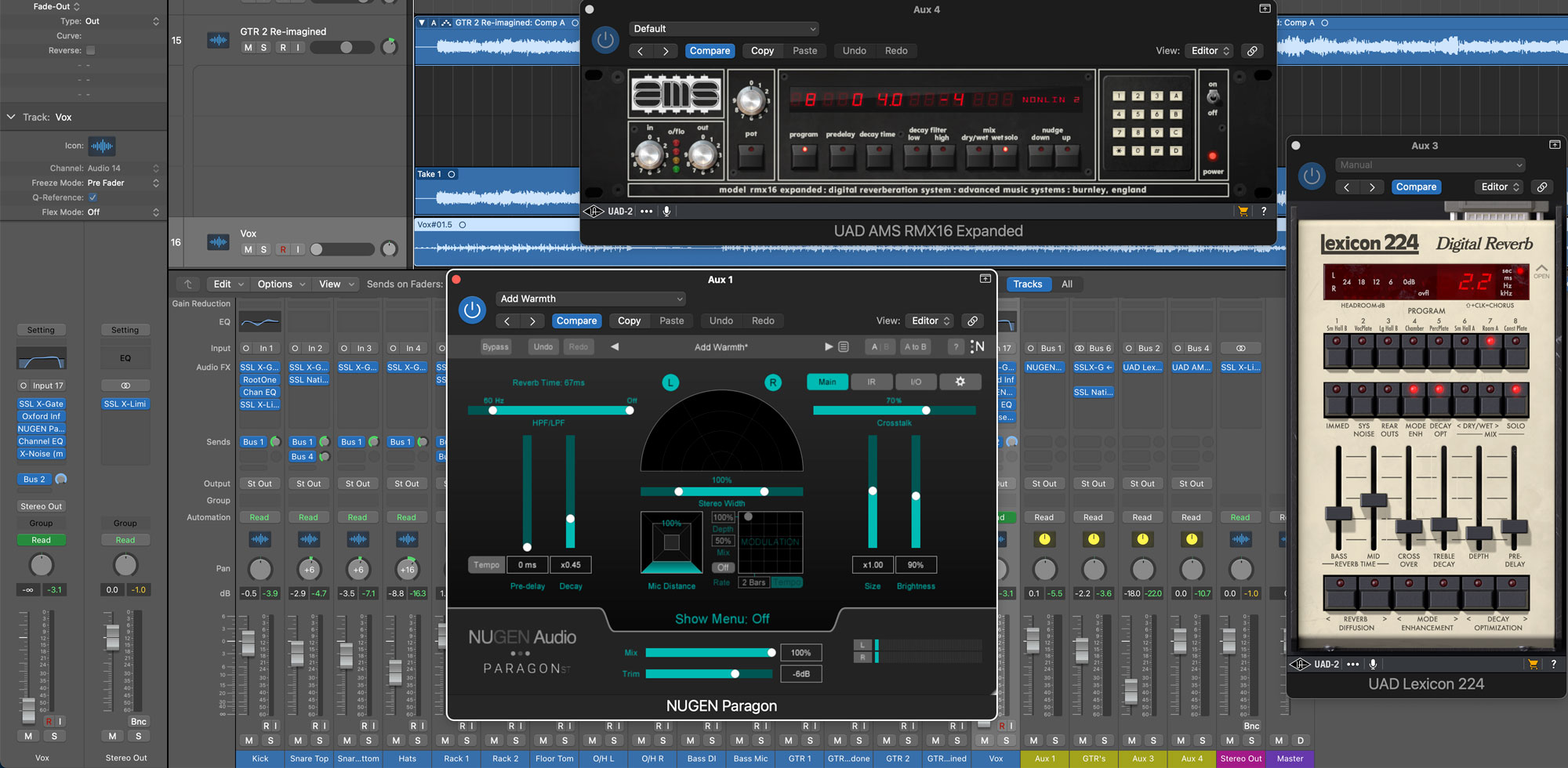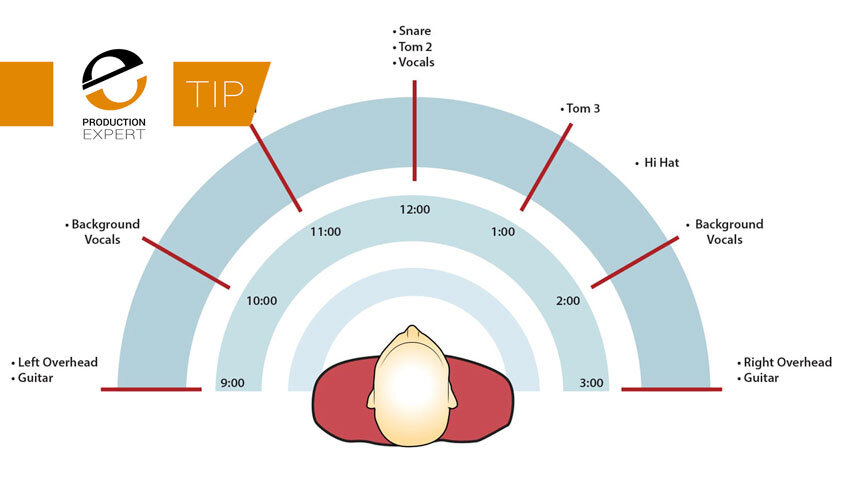How to make your vocals sit nicely in a track – 10 top tips
The importance of a well-integrated vocal cannot be overstated in music production. The vocal is always going to be the main attraction, anchoring the song’s emotional core. Accomplishing a well-balanced mix where the vocals sit nicely demands meticulous attention to detail. Sound engineers are known to invest an extensive amount of time perfecting a track’s vocal. Renowned engineer Dave Pensado has been quoted as saying when mixing a track he usually spends the majority of his time allocated to the vocal.
Getting vocals to sit nicely is not solely confined to the mixing stage. It commences long before, with the recording and performance. Here, aspects such as the quality of the vocal performance and the recording environment are of paramount importance. So make sure you take good care to record your vocals as well as possible as there’s an old saying in the industry that relates to the polishing of something rather unpleasant.
Once you’re satisfied with the vocal recording it’s time to position it within the broader soundscape of the track. And that’s where this guide is here to help! We have listed ten crucial techniques designed to help your vocal sit pretty in the mix.
1. EQ Sculpting
Possibly the most important tool in creating the perfect vocal nest is EQ. It can help carve out a niche for the vocal within the various musical elements of a track. Commence by eliminating superfluous low-end frequencies that might affect the vocal clarity. To do this apply a high pass filter and sweep the low-end cut until you can hear it having an audible effect. Then pull it back a little to provide a safety margin.
Subsequently, employ precision EQing to address any frequency clashes between the vocal and other instruments. Gently notch out any clashing frequencies within the vocal. If the notching out of these frequencies has a detrimental effect on the quality of the vocal then try notching out the same frequency from the musical element instead. This meticulous sculpting ensures the vocals sit nicely in their designated frequency range without encroaching upon other vital elements.

2. Compression Techniques
The careful and considered use of compression to even out the vocal’s dynamic range is essential when mixing vocals. Compression has the power to foster consistency throughout a track. Employ a subtle yet effective compression setting to control peaks, allowing the vocal to maintain a steady presence throughout the track.
For more targeted compression the use of multiband compression can become invaluable., multiband compression empowers you to fine-tune compression across specific frequency bands, addressing any irregularities that might impede the vocals sitting nicely within the mix. For instance, when applied specifically to the low mids it can help to bring down and control the levels of boominess in a vocal.
Another extremely effective technique for vocals is sidechain compression. Utilize sidechain compression to dynamically carve out space for the vocal within the mix. Configure the sidechain compressor to attenuate competing instruments, such as pads or guitars, whenever the vocal is present. This technique allows the vocal to shine through, ensuring its prominence in the mix.
3. Reverb, Delay and FX
Experimentation with reverb and delay imparts depth and spatial dimension to the vocal. Begin by selecting reverbs and delays that complement the track’s mood. Apply these effects subtly, ensuring the vocal remains intelligible and doesn’t get lost in the ambience.
Furthermore, you may want to employ additional effects to enhance the vocal’s character. Creative processing effects such as saturation and distortion can add warmth and energy. You must always keep in mind the objective of vocals sitting nicely without overpowering the mix.

4. Volume Automation
Crafting the perfect vocal presence entails dynamic adjustments. Implement volume automation to modulate the vocal levels throughout the track, accentuating essential phrases or hooks. This method allows for nuanced control, ensuring the vocals are sitting nicely in the mix without dominating or fading into obscurity during varying sections of the song. Most DAWs offer track automation or alternatively, there are specialist plugins such as Vocal Rider by Waves that do this automatically.
5. Backing Vocals and Harmonies
Layering backing vocals or harmonies can enrich the overall vocal texture. Strategically incorporate these additional vocal elements to complement the lead vocal. The aim is to amplify the main vocals’ impact without overshadowing it. With careful adjustment of the levels and stereo positioning, you can achieve a cohesive blend, ensuring vocals sit perfectly in harmony with the arrangement. The use of more reverb level on backing vocals in comparison to the lead can also help the overall vocal embed itself within a song.
6. De Essing
Harsh sibilant sounds (‘s’ and ‘sh’ sounds) can distract from an otherwise smooth vocal delivery and overall mix. Employ a de-esser to tame these high-frequency spikes, maintaining vocal clarity and ensuring vocals sit nicely without causing discomfort to the listener’s ears. For a more in-depth look at de-essing check out this blog
7. Panning and Stereo width
Experiment with subtle vocal panning to create spatial depth within the mix. Carefully balance the stereo image, ensuring the vocal maintains its central presence while adding width. Use stereo imaging plugins sparingly to widen the vocal without compromising its focus, While the lead vocal should remain central you can be much more cavilier with the panning of the backing vocals. Try to identify stereo width values that are not being occupied by other instruments, particularly those of a similar frequency.

8. Master Mix Bus Processing
When aiming for a well-integrated vocal within a mix, consider applying subtle processing to your master mix bus. Employing a gentle bus compressor with a transparent setting can help glue the elements of your mix together, including the vocal, by subtly taming dynamic peaks and fostering cohesion. Additionally, a slight boost in the high-mid frequencies on the master EQ can impart a touch of clarity and presence to the overall mix. This too can aid in vocals sitting nicely without overpowering other elements. However, exercise caution and moderation to ensure the processing remains subtle, preserving the mix’s natural dynamics while enhancing the vocal’s integration.
9. Monitor in Mono
Regularly switch your monitoring system to mono while mixing to ensure the integrity of the vocal’s presence across different playback systems. By listening in mono, any potential phase issues or elements that rely heavily on stereo separation become apparent. This practice ensures the vocal maintains clarity and impact even in scenarios where the stereo field is collapsed, emphasizing the importance of vocals sitting nicely across all playback environments.
10. Reference Tracks
Utilize reference tracks from selected professionally mixed songs to calibrate the vocal’s position and prominence within your mix. Compare the relative levels, tonal balance, and spatial placement of vocals in these reference tracks to fine-tune your own mix. This approach helps you ensure that your vocals sit nicely in a similar context as established, professionally mixed tracks.
Summary
By amalgamating these ten key techniques into your mixing process, you should be able to seamlessly integrate vocals into your track like a boss! The culmination of carefully considered and executed recording, nuanced processing, and a keen ear for balance ultimately leads to the goal of achieving vocals that sit perfectly within the rich tapestry of your musical creation. Good luck!
Remember – RouteNote Create subscriptions start from as little as $2.99. You also get 10 FREE credits to spend on samples along with access to our FREE sample pack bundle when you sign-up!
